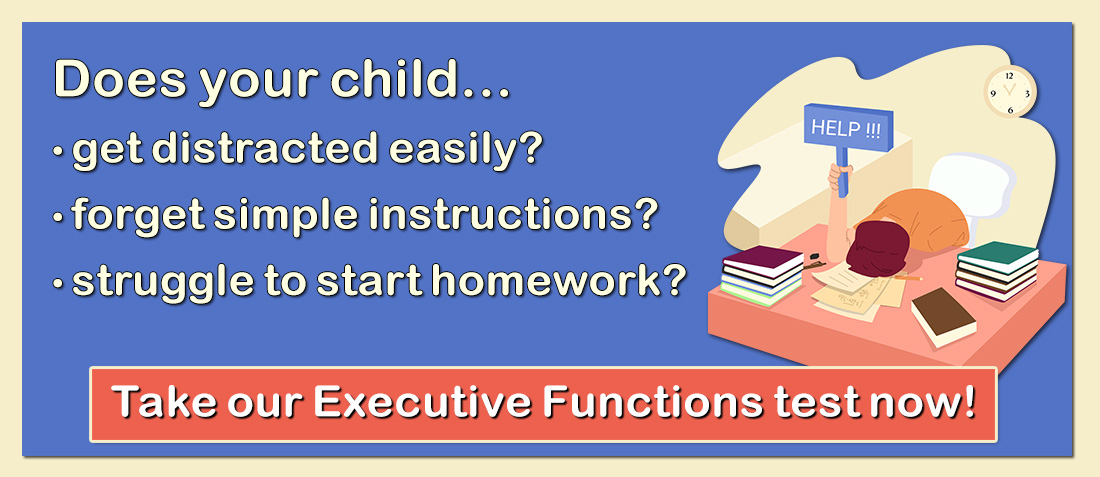Goal-directed persistence, also known as “stick-to-itiveness,” is the ability to set a reachable goal and then display ongoing efforts and attention towards achieving this goal. Persistence is needed when a task becomes boring, when it is interrupted, and when one needs to change strategies in order to reach the goal. Persistence involves sequencing, willfulness, and the ability to learn from experience. Goal-directed persistence is particularly important when task demands are long-term; It is also very important in maintaining effort with tasks that are boring or uninteresting.
Home and School Situations Requiring Goal-Directed Persistence
- Completing a homework assignment
- Cleaning the dishes or other assorted chores
- Saving money over time to buy a video game or toy
- Creating a large project for school
- Reading a novel
- Completing a lengthy video game
- Playing on a sports team
- Developing an expertise in dance, art, or music
Hints and Strategies to Improve Goal-Directed Persistence
1. Encourage your child to develop schedules for long-term projects. Your child should be encouraged to identify home and school long-term projects, due dates, and the work that is required for their successful completion. Synchronize home and school calendars on a frequent basis to ensure consistency in expectations.
2. As a parent, read the book “Mindset” by Carol Dweck. Seek out additional books and articles that can be used to help your child to embrace this perspective of a “growth mindset,” where individuals believe they are capable of improvement and accomplishment through persistence.
3. Give your child the responsibility of caring for a family pet. Taking care of a family pet can be good training in task persistence. Help your child to see the need for daily care of a pet that includes feeding, brushing, walking, etc. Through taking on these jobs, she may develop responsibility and cultivate persistence on behalf of the creature’s well-being. Digital technologies such as “Nintendogs” for the Nintendo DS; or “Tamagotchi,” a handheld virtual pet simulator; or online games such as “Neopets” can help prepare your child to be the main provider of care for family pets.
4. Provide examples from literature about people who succeeded despite the odds. Your child may enjoy reading or being read books about people who persevered in response to difficult situations, such as “The Little Engine that Could;” “Alexander and the Terrible, Horrible, No Good, Very Bad Day;” “Clorinda Takes Flight;” and “Al Capone Does My Shirts.” Biographies on J.K. Rowling (author of the Harry Potter series), Bill Clinton, and Oprah Winfrey may also be appropriate for more advanced readers.
5. Reward “stick-to-itiveness.” When your child experiences the rewards of sticking with a difficult task and completing it, he/she will be more motivated to try the next time. Activities such as playing sports or a musical instrument can build up goal-directed persistence. Provide meaningful rewards (such as praise, an outing, or a desired game) for chores that are completed. Offering treats, privileges, or simply verbal praise when chores are completed satisfactorily without any reminders can be very rewarding.
6. Use movies or videos to model sustained effort. Watch movies that portray the positive impact of sustained effort, choosing films that include topics or individuals that interest your child. He/She might enjoy watching a movie such as “Finding Nemo,” where the main character must persist through various obstacles in order to reach a final goal. Watching sports that portray the positive impact of creating a goal and sticking with it may also be useful. For example, the family might watch a video about Michael Jordan and discuss how many game-winning shots he missed as opposed to how many he made, pointing out that “sticking to it” and working hard made him a better player.
7. Encourage your child to play video games that require extended effort in overcoming obstacles in order to succeed. While it is important to limit the amount of time your child plays these games, many of the best video games present these types of ongoing challenges. If you have a child who frequently gives up easily, encourage him/her to be persistent. This may be done by providing him/her with assistance from yourself, video game walk-throughs, or from a peer who can help. Over the long haul, this may help him/her to understand the value of sustained effort. Games from the “Legend of Zelda” series, such as “Spirit Tracks,” “Twilight Princess,” and “Phantom Hourglass,” are excellent examples of these types of games. Other similar games might include “Professor Layton’s” and the “Final Fantasy” series.
8. Use digital technologies to help your child see progress in the long-term. Oftentimes, children can struggle to recognize why and how it is important to stick to an individual task. However, by allowing your child to reflect on and recognize the individual steps he/she has taken, it may be possible for your child to come to terms with the rewarding nature of persistence. One example of this would be to take digital pictures of your child as he/she is doing a science project. The first pictures might include a layout of all of the materials, while the subsequent photo sets might show the child reading books, beginning to conduct an experiment, creating a poster, and then the completed final project. Other examples might be based more upon household projects such as building a shelving or entertainment unit in the home, creating a large Lego castle or ship, or transitioning from a very messy room to a clean organized room. The use of the photographs will allow your child to recognize how far he/she has come and to recognize how rewarding persisting at a task can be.
9. Use daily experiences or stories that you hear to encourage persistence and sustained effort. The use of narrative stories to teach this skill can be very helpful for children. While keeping the story fairly short, it is often helpful to tell your child about a person you know who has overcome odds of illness or who grew up in poverty and became financially successful. Talking about local stories can be especially beneficial to your child. For example: sharing a story from which your child can learn about children whom are not that different from themselves, and have become athletes; or mentioning a teenage neighbor who works very hard at a job outside of school; or even telling a story from your own past when you worked very hard on a project, can demonstrate the benefits of being persistent.
Games and Activities That Can Practice Goal-Directed Persistence
“The Sims” – This game is helpful for enhancing persistence because players must maintain a human character in everyday life. In order for your child’s character to progress, persistence is a necessity.
Puzzles – Have your child work on completing puzzles, either traditional or online ones, making sure he/she is increasingly challenging herself over time with puzzles that are more complex and time-consuming.
Playing a new instrument or sport – Learning a new instrument or sport can be very frustrating initially and requires your child to practice and remain persistent in their efforts in order to reach success.
“Monopoly” and other lengthy board games – Board games that require a player to commit an extended period of time in order to complete the game, such as “Monopoly,” allow your child to practice goal-directed persistence skills.
“Memory” – The card game, “Memory” requires players to pay constant attention to what is occurring during their own turns, as well as the turns of other players.
Websites and Articles on Goal-Directed Persistence
LearningWorks for Kids: The premier resource for executive function information, offering a detailed explanation of goal-directed persistence, tips for parents, and activities to improve this skill.
Kids in Power: This site provides five simple ways for parents to help their children with concentration skills; take a look!
Great Schools: This site allows for parents to search for ways to help their child with concentration and problematic situations depending on the grade level.
Books on Goal-Directed Persistence
ADHD, Executive Function & Behavioral Challenges in the Classroom: Managing the Impact on Learning, Motivation and Stress by Cindy Goldrich, EdM, ADHD-CCSP & Carly Goldrich, BS, Ed (Ch. 7) “Take advantage of the latest brain research and evidence-based best practices to get kids motivated, focused, organized and performing closer to their real potential.”- Amazon
Executive Functioning Workbook for Kids: 40 Fun Activities to Build Memory, Flexible Thinking, and Self-Control Skills at Home, in School, and Beyond by Sharon Grand, PhD, BCN. (Ch. 3) “Help kids grow their executive functioning skills with activities for ages 6 to 9!”- Amazon
Fighting Invisible Tigers: Stress Management for Teens by Earl Hipp. (Ch. 6) “Fresh edition of a popular title offers teens straightforward advice on stress management, anxiety reduction, and digital well-being.”- Amazon
Smart but Scattered: The Revolutionary “Executive Skills” Approach to Helping Kids Reach Their Potential by Peg Dawson, EdD, and Richard Guare, PhD (Ch. 20) “Small changes can add up to big improvements–this empowering book shows how.”- Amazon
The Conscious Parent’s Guide To Executive Functioning Disorder by Rebecca Branstetter, PhD (Ch.12)“With the strategies and advice in this guide, you and your child will build sustainable bonds, develop positive behaviors, and improve executive functioning skills for life.” – Amazon
The Secrets of Top Students: Tips, Tools, and Techniques for Acing High School and College by Stefanie Weisman. (Ch. 1) “Stefanie Weisman, who was the Valedictorian of her High School, and received the Asher Green Award for having the highest GPA at Columbia University gives her thoughts on how your child can succeed in the higher levels of education.”- Amazon
Receive online class information and helpful tips from Dr. Randy Kulman's LearningWorks for Kids |



